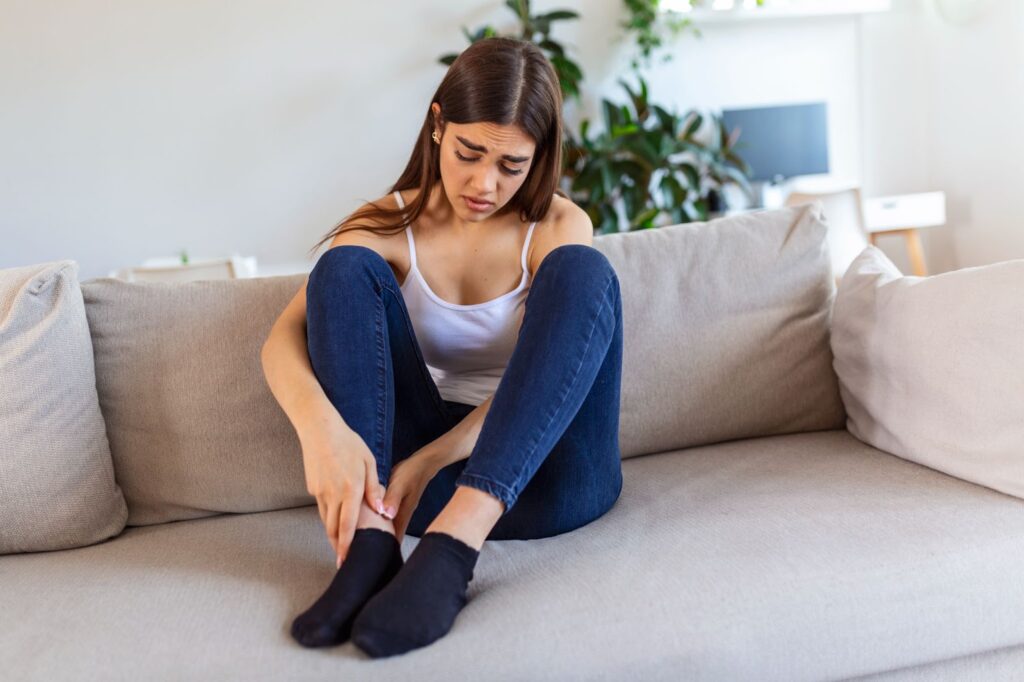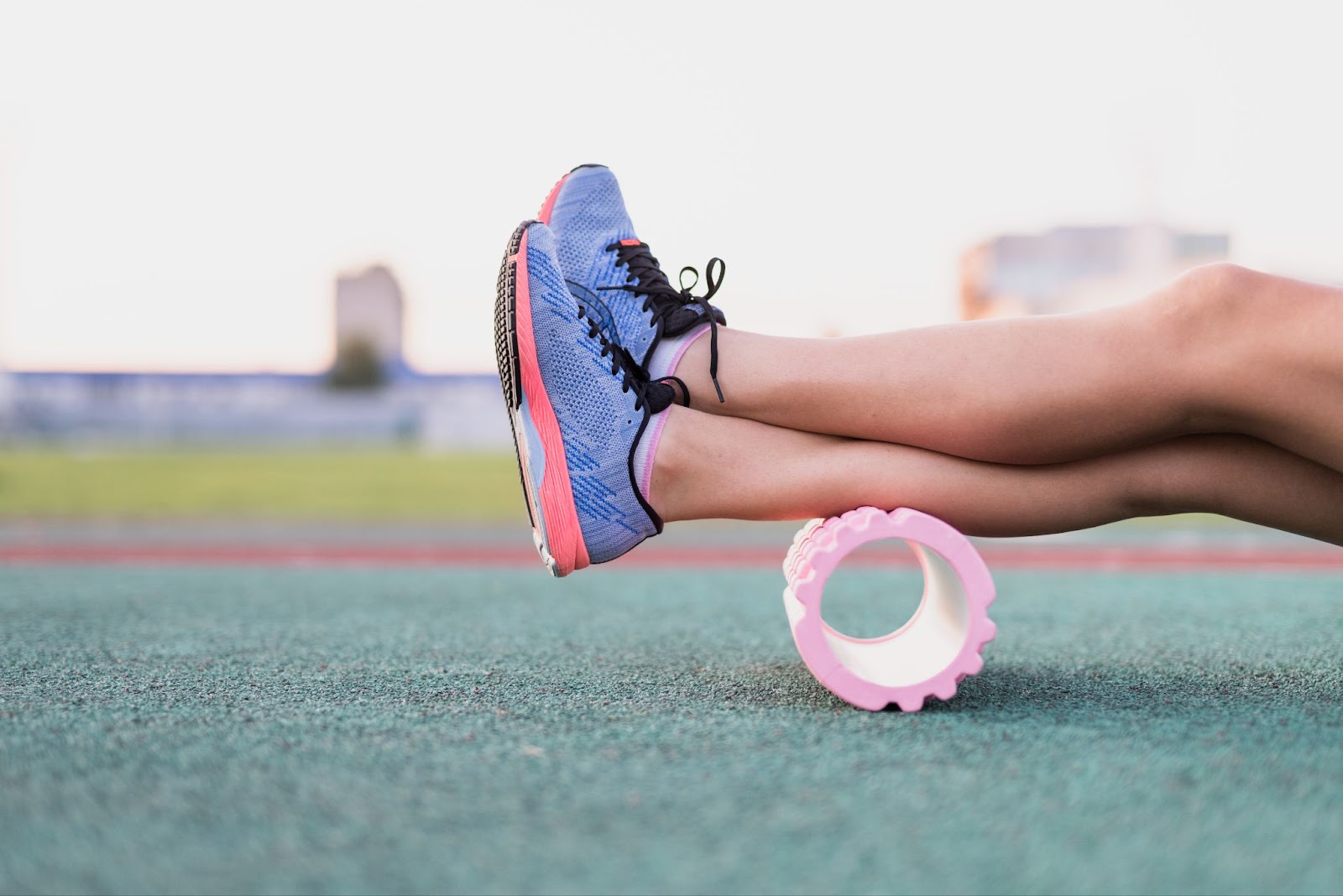Tinea pedis, commonly referred to as athlete’s foot, stands as a prevalent fungal ailment impacting millions globally. Contrary to its name’s implication, this condition does not discriminate, affecting not only athletes but also individuals across various demographics. The susceptibility to athlete’s foot transcends professions, encompassing not just athletes and fitness enthusiasts but also office-goers and children, highlighting its ubiquitous nature.
This piece embarks on an exploration of the intricacies surrounding athlete’s foot, delving into its origins, symptoms, preventive measures, and efficacious remedies. By delving deeper into the nuances of this widespread malady, one can arm oneself with the requisite knowledge to identify, manage, and potentially forestall athlete’s foot altogether.
Understanding Athlete’s Foot: A Common Fungal Infection
Athlete’s Foot, clinically referred to as tinea pedis, is a prevalent and transmittable fungal infection that primarily targets the skin of the feet. Characterized prominently by redness, itchiness, and flaking skin, this infection often thrives in the areas between the toes or on the soles of the feet. In several cases, the affected area can turn exceedingly painful, hindering the person’s ability to walk with ease.
Contrary to the common misconception fostered by its name, Athlete’s Foot does not solely afflict sportspersons or athletes. People from all walks of life can fall victim to this skin condition. More often than not, the fungus that causes Athlete’s Foot finds a favorable breeding ground in sweaty feet constricted within tight-fitting shoes.
Moreover, individuals who frequent public facilities such as swimming pools and communal showers are at a heightened risk of contracting the infection. Here, the fungus thrives in the warm, moist environment and often spreads when individuals walk barefoot in these areas.
It’s crucial to understand the subtleties of Athlete’s Foot to effectively prevent, identify, and treat it:
- Symptoms: Indicative signs include persistent itchiness, redness, and flaking skin primarily between the toes or on the soles. In advanced cases, the skin may crack or blister, leading to discomfort or pain;
- Causes: The infection predominantly arises from the overgrowth of fungi in the moist and warm conditions of confined footwear. Direct contact with an infected person or surfaces can also lead to contraction;
- Prevention: Maintain good foot hygiene, avoid sharing towels or shoes, and avoid walking barefooted in communal areas. Opt for breathable footwear to decrease sweat accumulation;
- Treatment: Over-the-counter antifungal treatments are usually effective. However, for resistant cases, a consultation with a healthcare professional is advisable.
The Likely Suspects: Who’s More Susceptible to Athlete’s Foot?
The prevalence of Athlete’s Foot does not discriminate when it comes to age, gender, or ethnicity, but certain groups tend to experience a higher susceptibility to this ailment. Even though men are more often afflicted than women and adults more so than children, the possibility of developing Athlete’s Foot remains universally plausible.
Certain variables play a critical role in the likelihood of an individual contracting this fungal infection. These contributing factors can significantly enhance the chances of developing Athlete’s Foot:
- Advanced Age: Individuals over 65 years of age are more prone to Athlete’s Foot due to decreased immunity and blood circulation, which creates an ideal environment for fungal growth;
- Public Facilities Usage: Regular usage of public amenities such as swimming pools and their adjoining changing rooms, particularly when barefoot, heightens the risk of exposure to the infection;
- Constrictive Footwear: Habitual wearing of tight shoes, especially in warm climates, creates the moist and warm conditions that fungi thrive in;
- Hyperhidrosis: People with excessively sweaty feet are at a higher risk as moisture promotes fungal growth;
- Poor Circulation: Conditions that impede blood circulation, such as Peripheral Arterial Disease, can enhance susceptibility to Athlete’s Foot;
- Compromised Immunity: A weakened immune system, due to conditions like HIV/AIDS or treatments like chemotherapy, increases the risk;
- Diabetes: Diabetic individuals often experience impaired immunity and circulation, making them more prone to fungal infections;
- Climate: People living in hot and humid climates, like Australia, tend to have a greater propensity towards Athlete’s Foot due to the perpetually warm conditions.
Recognizing these risk factors and taking proactive measures, like maintaining proper foot hygiene and wearing breathable footwear, can significantly reduce the likelihood of developing Athlete’s Foot.
Interpreting the Signs: Symptoms of Athlete’s Foot
Recognizing the early symptoms of Athlete’s Foot is the first step towards its effective management. Understanding how this infection manifests on the skin can help timely identification and prompt treatment. While the specific symptoms can vary from individual to individual, the following signs are commonly associated with Athlete’s Foot:
- Rash Appearance: The onset of Athlete’s Foot is usually marked by the appearance of a red and scaly rash on the feet. This rash may begin inconspicuously between the toes before progressing across other areas of the foot;
- Skin Disruption: An intensification of the infection often leads to the skin becoming cracked or peeled, especially between the toes. This may be accompanied by a softening or maceration of the skin;
- Discomfort: Itching, stinging, and burning sensations are typical symptoms associated with Athlete’s Foot. The discomfort is usually more pronounced immediately after removing shoes and socks;
- Blisters: In some cases, blisters may develop on the infected skin. These fluid-filled pockets can cause further discomfort and risk secondary bacterial infections if ruptured;
- Raw Skin: More advanced cases of Athlete’s Foot can lead to raw skin exposure due to significant skin breakdown. This often adds to the discomfort and makes the foot more prone to secondary bacterial infections;
- Spreading of Infection: Although the infection typically starts on the foot, it can spread to other body parts. If the hand frequently comes into contact with the infected foot, such as through scratching, the fungi may be transferred, leading to a similar infection on the hand.
Being aware of these symptoms can enable early intervention, significantly improving the effectiveness of treatment. Some individuals may attempt to ignore the symptoms or treat them ineffectively with regular moisturisers. However, persistent symptoms should be taken seriously as delay in proper treatment can exacerbate the condition and complicate recovery. Therefore, seeking professional medical advice is recommended for prolonged or recurrent symptoms.
Risks of Neglect: The Consequences of Untreated Athlete’s Foot
Procrastination in addressing Athlete’s Foot can result in a marked escalation of the condition. What starts as a mild irritation may evolve into a debilitating skin affliction, making everyday activities, such as walking, significantly challenging. Ignoring the symptoms of Athlete’s Foot can lead to the following complications:
- Worsened Skin Disruption: Prolonged neglect can intensify the cracking and peeling of the skin. This could lead to painful fissures and bleeding, potentially opening a gateway for secondary infections;
- Maceraion: The skin between the toes might turn moist and white, a condition known as maceration, which further galvanizes the fungal growth;
- Odor Emergence: Athlete’s foot often leads to an unpleasant odor due to the infection’s fungal nature and the associated skin breakdown;
- Blisters Transformation: Untreated blisters may start oozing, leading to raw skin exposure and escalating discomfort;
- Pain Incidence: As the condition deteriorates, it may start causing a significant amount of pain due to the skin’s widespread disruption;
- Onset of Plantar Warts: The cracks in the skin create an open entrance for viruses, potentially leading to the development of plantar warts;
- Fungal Nail Infections: The fungus can infiltrate through the skin into the nails, causing a secondary infection. This may result in the nails becoming discolored, thickened, and even detaching from the nail bed.
The progression of Athlete’s Foot from a minor inconvenience to a severe foot ailment underlines the importance of timely identification and treatment. Ignoring the signs can entangle the individual in a painful situation, which could be avoided through early intervention. Therefore, it’s crucial not to disregard persistent or worsening symptoms. If over-the-counter measures fail to provide relief, it is high time to seek professional medical help.
Demystifying the Condition: Athlete’s Foot Diagnosis
The accurate diagnosis of Athlete’s Foot is the key to its effective treatment. Since it can often be confused with other skin conditions due to similar symptoms, a thorough assessment by a qualified healthcare professional, such as a podiatrist, is crucial.

During the diagnostic process, the practitioner conducts a comprehensive physical examination. This involves checking the affected areas for signs of Athlete’s Foot, like redness, flaky skin, and blisters. However, physical inspection alone may not suffice, especially when other skin conditions may mimic the symptoms. In such cases, additional tests can be of great help.
Laboratory tests involve evaluating a sample of the affected skin under a microscope or culturing the sample in a medium conducive to fungal growth. Such tests help not only confirm the presence of fungus but also distinguish between different types of fungi.
It is crucial to discern if the patient is afflicted with a standalone fungal infection or a combination of fungal and bacterial infections. The latter scenario requires a different treatment approach, so it is important to identify the precise nature of the infection.
Remember, a confident diagnosis lays the foundation for an effective treatment plan:
- A thorough physical examination identifies the characteristic signs of Athlete’s Foot;
- Laboratory tests can confirm the presence and type of fungi involved;
- Distinguishing between fungal and bacterial infections is vital to devise an appropriate treatment plan.
A proactive approach towards diagnosis can lead to timely treatment, helping to combat the infection more efficiently and preventing further complications. Read about the power of Shock Wave Therapy in revitalizing your health and well-being. Uncover its benefits and how it can transform your recovery journey.
Averting the Athlete’s Foot: Preventive Measures and Treatment Options
An Athlete’s Foot diagnosis necessitates prompt treatment initiation coupled with strategic lifestyle adjustments. These modifications play a pivotal role in not only managing the current infection but also in preventing future recurrences. Here are comprehensive recommendations endorsed by healthcare professionals for individuals dealing with Athlete’s Foot:
- Hygiene Practices
- Cleanse your feet daily using mild soap and warm water;
- Pay extra attention to the spaces between your toes, as moisture tends to accumulate there;
- Dry your feet thoroughly, especially after bathing or swimming, to prevent fungal growth.
- Footwear Selection
- Opt for breathable shoes made of natural materials like leather or canvas to reduce moisture buildup;
- Consider wearing open-toed sandals or shoes with mesh panels to promote air circulation around your feet;
- Rotate your footwear to allow them to air out and dry completely between uses.
- Sock Choices
- Wear moisture-wicking socks made of materials like bamboo or cotton to keep your feet dry;
- Change your socks regularly, especially if you have sweaty feet or engage in physical activities;
- Avoid wearing damp socks for extended periods, as they create a favorable environment for fungal growth.
- Personal Care Items
- Disinfect your socks, shoes, and any other items that come in contact with your feet to prevent reinfection;
- Wash towels and bath mats regularly in hot water and dry them thoroughly;
- Refrain from sharing personal items like socks or shoes to avoid spreading the infection to others.
- Public Space Precautions
- Use protective footwear like flip-flops or shower shoes in communal areas such as public showers, swimming pools, and changing rooms;
- Avoid walking barefoot in high-risk areas to minimize exposure to fungal spores.
- Over-the-Counter Antifungal Treatment
- Consider using non-prescription antifungal creams, ointments, powders, or sprays for mild cases of Athlete’s Foot;
- Consult with a healthcare professional or pharmacist to determine the most suitable product for your specific condition;
- Follow the instructions on the product label diligently for optimal results.
- Prescription Medications
- In severe or persistent cases, your doctor may prescribe stronger topical antifungal agents or oral medications;
- Complete the full course of prescribed medication as directed by your healthcare provider to ensure complete eradication of the infection.
- Early Intervention
- Monitor your feet regularly for any signs of redness, itching, peeling, or cracking, which are common symptoms of Athlete’s Foot;
- Seek prompt medical attention if you suspect an infection or if over-the-counter treatments do not provide relief;
- Early intervention can prevent the spread of the infection and expedite the healing process.
- Preventive Measures
- Practice good foot hygiene and adopt preventive measures even after the infection clears to avoid future occurrences;
- Educate family members or close contacts about Athlete’s Foot to prevent transmission within household settings;
- Maintain overall foot health by keeping nails trimmed, avoiding tight-fitting footwear, and wearing moisture-wicking socks regularly.
- Lifestyle Adjustments
- Incorporate foot-friendly habits such as wearing breathable footwear, avoiding prolonged moisture exposure, and keeping feet dry and clean;
- Follow a balanced diet rich in nutrients that support immune function, as a strong immune system can help combat fungal infections;
- Manage stress levels and prioritize adequate sleep, as stress and fatigue can weaken the immune system and make you more susceptible to infections.
Remember, taking proactive steps towards foot care and infection prevention can significantly reduce the risk of developing Athlete’s Foot or experiencing recurrent episodes. Stay informed, stay vigilant, and prioritize your foot health for a comfortable and active lifestyle.
Conclusion
In conclusion, athlete’s foot, or tinea pedis, is a common fungal infection that can affect anyone regardless of their lifestyle or profession. Understanding its causes, symptoms, prevention strategies, and treatments is crucial for effectively managing and potentially avoiding this bothersome condition. By staying informed and proactive, individuals can take the necessary steps to protect themselves and maintain optimal foot health.


